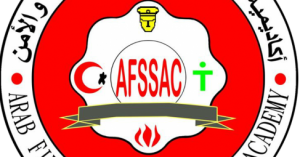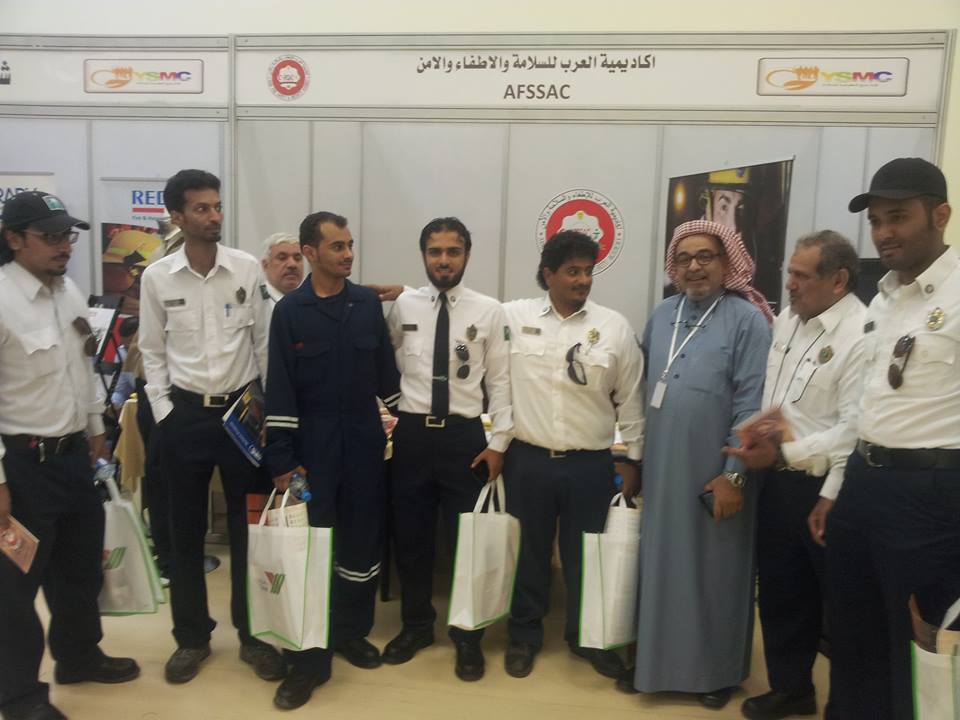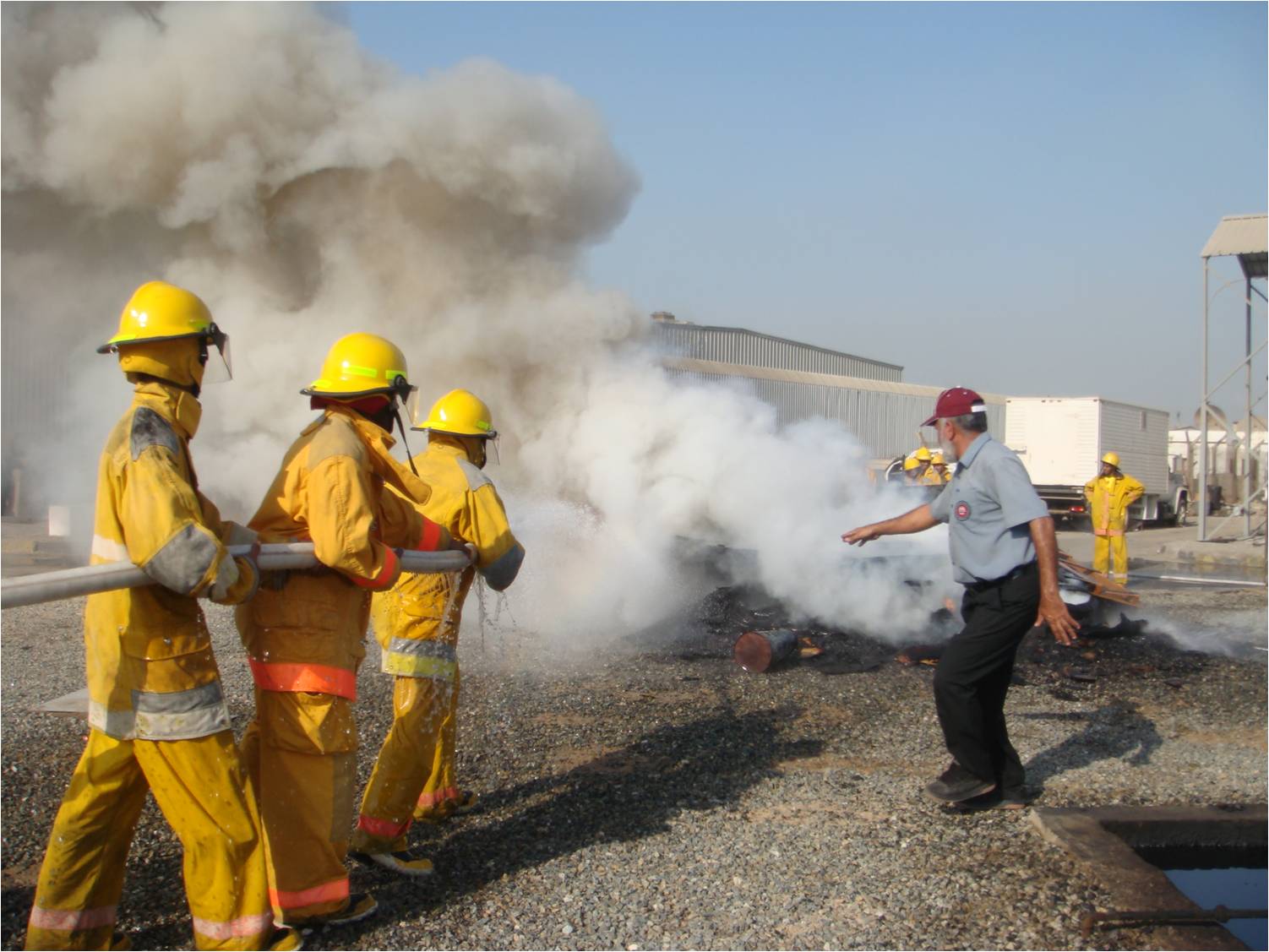
Know your result online
The AFSSAC academy provide service for students to make them able to know their result online just enter the identification number and click show result , then the result will appear immediately.with our best wishes

The AFSSAC academy provide service for students to make them able to know their result online just enter the identification number and click show result , then the result will appear immediately.with our best wishes
[table caption=”ASS Fire Science Degree Result” width=”500″ colwidth=”20|400|300|30|100″ colalign=”left|left|center|left|right” style=”font-size:12px;float:left;” ]
No, Name, Course, Ratio, Grade
1, Ibrahim Abd Allah Al-Hamarany, ASS Fire Science Degree, 74, Good
2, Ahmad Esam Yousef Bo-Qary, ASS Fire Science Degree, 70, Good
3, Ayman Saad Gholyfis Al-Hamarany, ASS Fire Science Degree, 70, Good
4, Belal Bandar Al-Hamarany, ASS Fire Science Degree, 72, Good
5, Hazem Owaybed Abdou Al-Gadaany, ASS Fire Science Degree, 70, Good
6, Hamad Ateya Al-Hamarany, ASS Fire Science Degree, 70, Good
7, Khaled Rewiey Mehanna Al-Etieby, ASS Fire Science Degree, 83, Very Good
8, Khaled Mohammed Ahmed Al-Ghamdy, ASS Fire Science Degree, 83, Very Good
9, Salem Thabet Al-Hamarany, ASS Fire Science Degree, 75, Good
10, Saad Gwiber Al-Hamarany, ASS Fire Science Degree, 77, Good
11, Talal Abd Allah Al-Semery, ASS Fire Science Degree, 90, Excellent
12, Abd Allah Salah Al-Gadaany, ASS Fire Science Degree, 90, Excellent
13, Magdy Raheem Al-Hamarany, ASS Fire Science Degree, 80, Very Good
14, Mohsen Aaly Ahmed Shebily, ASS Fire Science Degree, 70, Good
15, Mohammed Aaly Ahmed Shebily, ASS Fire Science Degree, 82, Very Good
16, Mohammed Abdou Al-Gizany, ASS Fire Science Degree, 90, Excellent
17, Mohammed Ateya Al-Hamarany, ASS Fire Science Degree, 76, Good
18, Mohammed Mubarak Al-Gadaany, ASS Fire Science Degree, 80, Very Good
19, Montaser Bakr Othman, ASS Fire Science Degree, 72, Good
20, Nayef Saud Milibary, ASS Fire Science Degree, 82, Very Good
21, Nayef Mohammed Al-Hamarany, ASS Fire Science Degree, 72, Good
22, Hani Mohammed Ali Saify, ASS Fire Science Degree, 76, Good
23, Wahban Yousef Ali Mubarak, ASS Fire Science Degree, 86, Very Good
[/table]

Department of Transportation Guidance for Transporting
Ebola Contaminated Items, a Category A Infectious Substance
An infectious substance is regulated as a hazardous material under the U.S. Department of Transportation’s (DOT’s) Hazardous Materials Regulations (HMR; 49 C.F.R., Parts 171-180). The HMR apply to any material DOT determines is capable of posing an unreasonable risk to health, safety, and property when transported in commerce.1 An infectious substance must conform to all applicable HMR requirements when offered for transportation or transported by air, highway, rail, or water. Refer to the Center for Disease Control (CDC) for guidance on handling these agents before transporting them (see http://www.cdc.gov/vhf/ebola/hcp/index.html).
This document provides guidance on DOT regulations regarding the transportation of a Category A infectious substance only and highlights some of the requirements of the HMR, which can affect transportation safety. This document is intended to provide general guidance and does not address many of the specific provisions and exceptions contained in the HMR. It should not be used as a substitute for the HMR to determine compliance.
What is a Category A infectious Substance?
A Category A infectious substance is a material known or reasonably expected to contain a pathogen, such as Ebola, that is in a form capable of causing permanent disability or life threatening or fatal disease in otherwise healthy humans or animals when exposed to it.
An infectious substance classification is based on the patient or animal’s known medical history or symptoms, endemic local conditions, or professional judgment concerning the individual circumstances of the source human or animal.
How is waste associated with a Category A infectious substance different from regulated medical waste?
Regulated medical waste is a waste or reusable material known or suspected of containing a Category B pathogen that is derived from medical treatment or biomedical research. (See §§ 173.134(a)(1)(ii) and (c)(2)).
A Category B pathogen is not in a form that is generally capable of causing permanent disability or life-threatening or fatal disease in otherwise healthy humans or animals.
Because of the hazards posed by Category A infectious substances, these materials have more stringent packaging requirements and are not included in the definition of a “regulated medical waste.”
Are used health care products that may be contaminated regulated?
Yes, the transport of medical equipment, sharps, linens, and used health care products (such as soiled absorbent pads or dressings, kidney-shaped emesis pans, portable toilets, used Personal Protection Equipment (gowns, masks, gloves, goggles, face shields, respirators, booties, etc.) or byproducts of cleaning) contaminated or suspected of being contaminated with a Category A infectious substance must comply with the packaging requirements for infectious substances in § 173.196.
What is the correct packaging for a Category A infectious substance?
The specific requirements for authorized packaging and materials for transporting a Category A infectious substance are listed in § 173.196. In addition, each packaging must meet specific test standards in accordance with § 178.609.
In general, a Category A infectious substance must be triple packed in a:
(1)primary watertight receptacle,
(2) watertight secondary packaging, and
(3) rigid outer packaging.
Are there any additional HMR packaging requirements for a Category A infectious substance?
Yes, depending on the physical state and other characteristics of the material:
Category A infectious substances shipped at ambient temperatures or higher must be packaged in accordance with § 173.196(b)(1),
Category A infectious substances shipped refrigerated or frozen must be packaged in accordance with § 173.196(b)(2), and
Category A infectious substances shipped in liquid nitrogen must be packaged in accordance with § 173.196(b)(3). (See http://www.ecfr.gov/cgi-bin/text-idx?SID=1baa09de1469d4c6ede30d6f6f303959&node=pt49.2.173&rgn=div5
Must the shipment of a Category A infectious substance be accompanied by a shipping paper?
Yes, the shipping paper requirements identify key hazard communication information. The shipping paper must include the following:
UN number and proper shipping name for the applicable Category A infectious substance– For Ebola, the shipping name is: “UN 2814, Infectious substances, affecting humans;”
Hazard class: Division 6.2 (infectious);
Packing group: N/A;
Type and quantity of packaging; and
Emergency response information (e.g., telephone number).
What information is required on the outside of the outer packaging?
The outer packaging must be marked with the UN identification number and proper shipping name (see above), and labeled with the black and white “INFECTIOUS SUBSTANCE” label that conforms to § 172.432.
The manufacturer who represents that the packaging is manufactured to meet a UN standard must mark it with the appropriate packaging standard markings. The markings must be durable, legible, and placed in a location as to be readily visible, in accordance with § 178.503(a).
Directional arrows to indicate the correct (upright) orientation of the closures of inner packagings that contain liquids must be used in accordance with § 172.312.
Are there additional requirements for specific modes of transportation?
Yes, all hazardous materials packagings intended for transportation by aircraft must comply with the general requirements for transporting hazardous materials by aircraft in § 173.27.
When unloaded from an aircraft, each package, overpack, pallet, or unit load device containing a Class A infectious substance must be inspected for signs of leakage. If evidence of leakage is found, the cargo compartment hold where the substance was stowed must be disinfected and the incident must be reported by telephone within 12 hours to the National Response Center at 1-800-424-8802. (See §§ 175.630(c) and 171.15(b)(3)).
Shippers and carriers also have the option of using international standards and regulations, instead of the HMR, in accordance with the provisions in §§ 171.22-171.24.
For air transportation, the carrier may use the International Civil Aviation Organization’s Technical Instructions for the Safe Transport of Dangerous Goods by Air (ICAO).
For maritime transportation, the carrier may use the International Maritime Dangerous Goods Code (IMDG).
Do the HMR require you to report incidents involving a Category A infectious substance?
All incidents during transportation involving fire, breakage, spillage, or suspected contamination involving a Category A infectious must be reported by telephoning the National Response Center at 1-800-424-8802 within 12 hours. See § 171.15(b)(3)).
Who must be trained to prepare and transport a Category A infectious substance?
In general, employees who handle a Category A infectious substance inside a facility or hospital are not regulated by the HMR. Employees who prepare hazardous materials for transportation (i.e., prepare shipping papers, packaging, labeling, and marking of packagings) are hazardous materials employees and must be trained in accordance with 49 C.F.R., Part 172, Subpart I. The training must include:
general awareness;
function-specific;
safety;
security awareness training; and
if applicable, modal specific training, such as driver training and the procedures necessary for the safe operation of a motor vehicle.
For detailed training requirements see § 172.704.
What type of security plan is required?
If you are offering for transportation or transporting a Category A infectious substance, you must develop and implement a security plan, and train your hazardous material employees on this plan. (See §§ 172.800-822). The plan must address:
personnel security,
unauthorized access, and
en route security.
Are there any Category A infectious substance exceptions from the HMR?
Yes, the following are excepted from the HMR when contaminated with a Category A infectious substance:
Corpses, remains, and anatomical parts transported for interment, cremation, or medical research at a college, hospital, or laboratory. (Importation of human remains to the United States for which the cause of death was a quarantinable communicable disease must comply with Center for Disease Control (CDC) regulations (42 C.F.R. § 71.55)).
Laundry or medical equipment complying with the Occupational Safety and Health Administration regulations in 29 C.F.R. in § 1910.1030 (bloodborne pathogens standard) intended for use, cleaning or refurbishment. This exception does not apply to medical equipment being transported for disposal.
Material that has been treated to fully eliminate, neutralize, or inactivate the pathogen (e.g., through autoclave or incineration).
The complete list of additional exceptions is located in § 173.134(b).
What if complying with the HMR requirements is not feasible?
You may apply for a special permit, which sets forth alternative requirements, or variances, to the requirements in the HMR. See § 107.105).
DOT may grant a special permit if you can demonstrate that an alternative packaging will achieve a safety level that:
is at least equal to the safety level required under Federal hazmat law or
is consistent with the public interest if a required safety level does not exist.
The HMR also provides for emergency processing of a special permit. (See § 107.117).
Information on applying for a special permit is available at:
http://phmsa.dot.gov/hazmat/permits-approvals/special-permits
Additional Information
“Transporting Infectious Substances Safely” brochure that explains the HMR for transporting infectious substance is available at:
Click to access Transporting_Infectious_Substances_brochure.pdf
All Center for Disease Control guidance regarding Ebola is available at:
http://www.cdc.gov/vhf/ebola/hcp/index.html
For questions on the HMR requirements, please contact the Pipeline and Hazardous Materials Safety Administration’s (PHMSA’s) Hazardous Materials Information Center at 1-800-467-4922, 9am-5pm Eastern time.
1 The HMR applies to interstate, intrastate, and foreign commerce.
Related Downloads
Additional Guidance for Transporting Infectious Substances

Photo from the wing to extinguish the Arab Academy, safety and security in the exhibition World Day for Safety and Occupational Health, organized by the Commission stems voluntary safety in cooperation with the DFI property for Jubail and Yanbu in Yanbu

Now it is available the first Arabic edition of Essentials of Firefighting and Fire Department Operations. (6th Edition). For purchasing you can transfer value in advance. for information of prices and payment process please contact us on email info@afssac.edu.sa
IFSTA’s Essentials of Fire Fighting, 6th Edition is the premiere resource for firefighter training. The completely revised text meets the NFPA® 1001, 2013 Edition JPRs. Essentials of Fire Fighting, 6th Edition is the most engaging and advanced text available for Firefighter I and II training. Building on IFSTA’s nearly 80 years of excellence, Essentials again sets the standard with:
• Content Separation – Firefighter I and II content is clearly identified and separated in each chapter for ease of teaching and learning.
• Research-Driven Content – Updates to content, skills and tactics reflect the most current research from the National Institute of Standards and Technology (NIST), Underwriters Laboratories (UL), and others.
• Student-Focused Design – High quality photos and illustrations emphasize the chapter content. Engaging graphics reinforce the sequence of each skill to ensure mastery is achieved safely. Key terms are clearly identified in the margins for ease of use and comprehension.
• Robust Electronic Features – eBook options, skills videos, interactive courses, study apps, Exam Prep, the ResourceOne learning management system, and more are part of the Essentials suite of products.
• Educationally Sound Instructional Materials – All of IFSTA’s instructional products are developed by educators who specialize in adult instruction. IFSTA now provides all instructional materials free of charge to fire service instructors.
In partnership with Brady Publishing, Essentials of Fire Fighting and Fire Department Operations, 6th Edition offers three additional chapters. Chapter 22 addresses the emergency medical care entrance requirements in Chapter 4 of NFPA® 1001, 2013 Edition. Chapters 23 and 24 address the Hazardous Materials Awareness and Operations according to NFPA® 472, 2013 Edition to meet NFPA® 1001 requirements. The addition of these chapters composes the most comprehensive fire fighting text in today’s market.
• Chapter 1: Orientation and Fire Service History
• Chapter 2: Firefighter Safety and Health
• Chapter 3: Fire Department Communications
• Chapter 4: Building Construction
• Chapter 5: Fire Behavior
• Chapter 6: Firefighter Personal Protective Equipment
• Chapter 7: Portable Fire Extinguishers
• Chapter 8: Ropes, Webbing, and Knots
• Chapter 9: Structural Search, Victim Removal, and Firefighter Survival
• Chapter 10: Scene Lighting, Rescue Tools, Vehicle Extrication and Technical Rescue
• Chapter 11: Forcible Entry
• Chapter 12: Ground Ladders Chapter 13: Tactical Ventilation
• Chapter 14: Water Supply
• Chapter 15: Fire Hose
• Chapter 16: Fire Stream
• Chapter 17: Fire Control
• Chapter 18: Loss Control
• Chapter 19: Fire Origin and Cause
• Chapter 20: Fire Protection Systems
• Chapter 21: Fire and Life Safety Initiatives
• Chapter 22: Emergency Medical Care for Fire Department First Responders
• Chapter 23: Hazards, Behavior, and Identification of Hazardous Materials/WMD
• Chapter 24: Mitigating Hazardous Materials/WMD
* Chapters 22-24 are only available in the expanded version, Essentials of Fire Fighting and Fire Department Operations, 6th Edition
[contact-form-7 id=”257″ title=”Order the Book”]

Now it is available the first Arabic edition of Essentials of Firefighting and Fire Department Operations. (6th Edition). For purchasing you can transfer value in advance. Price is 575 SAR, not including shipping. for information of prices and payment process please contact us on email info@afssac.edu.sa
IFSTA’s Essentials of Fire Fighting, 6th Edition is the premiere resource for firefighter training. The completely revised text meets the NFPA® 1001, 2013 Edition JPRs. Essentials of Fire Fighting, 6th Edition is the most engaging and advanced text available for Firefighter I and II training. Building on IFSTA’s nearly 80 years of excellence, Essentials again sets the standard with:
• Content Separation – Firefighter I and II content is clearly identified and separated in each chapter for ease of teaching and learning.
• Research-Driven Content – Updates to content, skills and tactics reflect the most current research from the National Institute of Standards and Technology (NIST), Underwriters Laboratories (UL), and others.
• Student-Focused Design – High quality photos and illustrations emphasize the chapter content. Engaging graphics reinforce the sequence of each skill to ensure mastery is achieved safely. Key terms are clearly identified in the margins for ease of use and comprehension.
• Robust Electronic Features – eBook options, skills videos, interactive courses, study apps, Exam Prep, the ResourceOne learning management system, and more are part of the Essentials suite of products.
• Educationally Sound Instructional Materials – All of IFSTA’s instructional products are developed by educators who specialize in adult instruction. IFSTA now provides all instructional materials free of charge to fire service instructors.
In partnership with Brady Publishing, Essentials of Fire Fighting and Fire Department Operations, 6th Edition offers three additional chapters. Chapter 22 addresses the emergency medical care entrance requirements in Chapter 4 of NFPA® 1001, 2013 Edition. Chapters 23 and 24 address the Hazardous Materials Awareness and Operations according to NFPA® 472, 2013 Edition to meet NFPA® 1001 requirements. The addition of these chapters composes the most comprehensive fire fighting text in today’s market.
• Chapter 1: Orientation and Fire Service History
• Chapter 2: Firefighter Safety and Health
• Chapter 3: Fire Department Communications
• Chapter 4: Building Construction
• Chapter 5: Fire Behavior
• Chapter 6: Firefighter Personal Protective Equipment
• Chapter 7: Portable Fire Extinguishers
• Chapter 8: Ropes, Webbing, and Knots
• Chapter 9: Structural Search, Victim Removal, and Firefighter Survival
• Chapter 10: Scene Lighting, Rescue Tools, Vehicle Extrication and Technical Rescue
• Chapter 11: Forcible Entry
• Chapter 12: Ground Ladders Chapter 13: Tactical Ventilation
• Chapter 14: Water Supply
• Chapter 15: Fire Hose
• Chapter 16: Fire Stream
• Chapter 17: Fire Control
• Chapter 18: Loss Control
• Chapter 19: Fire Origin and Cause
• Chapter 20: Fire Protection Systems
• Chapter 21: Fire and Life Safety Initiatives
• Chapter 22: Emergency Medical Care for Fire Department First Responders
• Chapter 23: Hazards, Behavior, and Identification of Hazardous Materials/WMD
• Chapter 24: Mitigating Hazardous Materials/WMD
* Chapters 22-24 are only available in the expanded version, Essentials of Fire Fighting and Fire Department Operations, 6th Edition
[contact-form-7 id=”257″ title=”Order the Book”]

Academy offers Arabs for firefighter safety and security Diploma in Science firefighters are training under the supervision of Professor specialists, using the latest techniques and this is a picture from one of the practical exercises that are within the academy until students are able to reach a high degree of workmanship and practical understanding of the ways to combat fires

Arab Academy for containing firefighter safety and security on the special laboratory for languages to raise the efficiency of students in the English language and is training under the supervision of professors, specialists